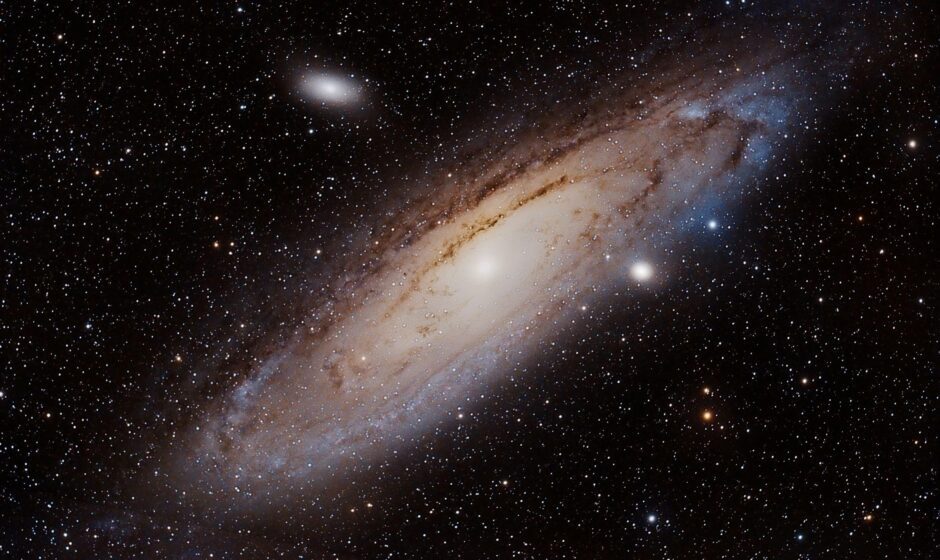Galactday: 55512.7
Imagine the universe not as a static, slowly expanding void, but as a vast, dynamic ocean. Within this cosmic sea, galaxies, those magnificent islands of stars, gas, and dust, are not merely drifting apart. Instead, they are caught in powerful, unseen currents, flowing like a rushing river towards immense gravitational basins. This captivating celestial dance, particularly evident in the region Terrans call the Great Attractor, paints a picture of galaxies behaving like moths drawn inexorably to a flame. Photo by Luis Felipe Alburquerque Briganti
At the heart of this cosmic river system lies the mysterious influence of dark matter. While we cannot see it directly, its gravitational grip shapes the very fabric of the universe. It’s the invisible architect, sculpting colossal “gulley’s and valleys” in the cosmic landscape, forming a vast, interconnected network known as the cosmic web.
These gulley’s and valleys aren’t empty space; they are concentrations of dark matter, immense gravitational wells that pull in everything around them. Galaxies, made mostly of ordinary matter, are like the water in our analogy, cascading down these gravitational slopes. Our own Milky Way galaxy, along with countless others, is part of a grand flow towards the Great Attractor, a region of space with an exceptionally high concentration of mass, including the dense Norma Cluster of galaxies, which forms the core of the Laniakea Supercluster.
The term “shoals” in our analogy further enhances the imagery. It suggests areas where the galactic currents become more turbulent and dense, where galaxies clump together more tightly, precisely what we observe in regions of high dark matter concentration, like galaxy clusters and superclusters. These are the cosmic hot spots where the gravitational pull is strongest, and the “river” of galaxies converges.
Astronomers observe these galactic movements not by watching them literally flow, but by analyzing their “peculiar velocities” – the motions of galaxies that deviate from the smooth, uniform expansion of the universe (known as the Hubble flow). These peculiar velocities are the tell-tale signs of galaxies being tugged and pulled by the gravity of their massive, unseen neighbors.
What makes this cosmic ballet even more profound is the realization that this intricate system of flowing galaxies and dark matter “shoals” exists only within our observable universe. This is the portion of the cosmos from which light has had enough time to reach us since the Big Bang. Beyond this cosmic horizon, an even vaster expanse of the universe exists, forever beyond our direct gaze. We know it’s there, subject to the same fundamental laws, yet its full extent and structure remain a tantalizing mystery.
Furthermore, the universe’s expansion, driven by the enigmatic force called dark energy, adds another layer of complexity. While dark matter pulls galaxies together, dark energy pushes them apart, causing the expansion of space to accelerate. This means that over time, some of these galactic “rivers” may eventually become so stretched that the flows diminish, and even some currently observable regions will recede beyond our cosmic horizon.
The shoals of dark matter offer a powerful and intuitive way to grasp the large-scale structure and dynamics of our universe. It’s a universe where galaxies are not isolated entities, but active participants in a grand gravitational dance, forever drawn by unseen forces towards the vast, silent landscapes sculpted by dark matter, a testament to the profound beauty and enduring mysteries of the cosmos.




